- Home
- Jane Yolen
Favorite Folktales From Around the World
Favorite Folktales From Around the World Read online
Compilation Copyright © 1986 by Random House, Inc.
Introduction, introductory materials, and Notes
Copyright © 1986 by Jane Yolen
All rights reserved under International and Pan-American Copyright Conventions.
Published in the United States by Pantheon Books, a division of Random House, Inc., New York, and simultaneously in Canada by Random House of Canada Limited, Toronto.
Library of Congress Cataloging-in-Publication Data Favorite folktales from around the world.
(Pantheon fairy tale and folklore library)
Includes bibliographical references.
1. Tales. I. Yolen, Jane.
GR76.F38 1986 398.2 86–42644
ISBN 0-394-54382-3
eBook ISBN: 978-0-8041-5286-0
0-394-75188-4 (pbk.)
Since this copyright page cannot legibly accommodate all the permissions acknowledgments, these appear on pages this page–this page.
v3.1
For the members of the
WESTERN NEW ENGLAND STORYTELLERS’ GUILD
When the heart overflows, it comes out through the mouth.
—ETHIOPIAN PROVERB
CONTENTS
Cover
Title Page
Copyright
Dedication
Epigraph
Acknowledgments
Introduction
TELLING TALES
The Man Who Had No Story (Ireland)
How Spider Obtained the Sky God’s Stories (Africa)
Helping to Lie (Germany)
The Ash Lad Who Made the Princess Say “You’re a Liar!” (Norway)
The Parson and the Sexton (Norway)
The Tall Tales (Burma)
Catherine, Sly Country Lass (Italy)
The Wise Little Girl (Russia)
Clever Answers (Russia)
A Dispute in Sign Language (Israel)
Leopard, Goat, and Yam (Africa)
An Endless Story (Japan)
THE VERY YOUNG AND THE VERY OLD
Glooscap and the Baby (American Indian)
The Brewery of Eggshells (Ireland)
Father of Eighteen Elves (Iceland)
The Fly (Vietnam)
The Two Pickpockets (England)
The Seventh Father of the House (Norway)
The King’s Favorite (China)
Wagging My Tail in the Mud (China)
When One Man Has Two Wives (Syria)
The Old Man and His Grandson (Germany)
Half a Blanket (Ireland)
TRUE LOVES AND FALSE
How Men and Women Got Together (American Indian)
The Little Old Woman with Five Cows (Siberia)
The Prayer That Was Answered (Tibet)
The Merchant’s Daughter and the Slanderer (Russia)
What Happened to Hadji (Turkey)
Mr. Fox (England)
The Waiting Maid’s Parrot (China)
The White Cat (France)
Sedna (Eskimo)
Urashima the Fisherman (Japan)
The Spirit of the Van (Wales)
The Toad-Bridegroom (Korea)
Taken (Ireland)
The Girl at the Shieling (Iceland)
Deer Hunter and White Corn Maiden (American Indian)
TRICKSTERS, ROGUES, AND CHEATS
Tyll Ulenspiegel’s Merry Prank (Germany)
The Hodja and the Cauldron (Turkey)
Being Greedy Chokes Anansi (Jamaica)
Quevedo and the King (Mexico)
Why the Hare Runs Away (Africa)
Coyote Fights a Lump of Pitch (American Indian)
Crack and Crook (Italy)
The Master Thief (Germany)
Peik (Norway)
The Monkey and the Crocodile (India)
The Race Between Toad and Donkey (Jamaica)
The King’s Son Goes Bear Hunting (Finland)
John Brodison and the Policeman (Ireland)
The Rabbi and the Inquisitor (Jewish)
The Ugly Son (Japan)
Dividing the Goose (Russia)
The Men Who Wouldn’t Stay Dead (France)
The Story of Campriano (Italy)
THE FOOL: NUMBSKULLS AND NOODLEHEADS
The Three Sillies (England)
Nasr-ed-Din Hodja in the Pulpit (Turkey)
Lazy Jack (England)
Chelm Justice (Jewish)
Those Stubborn Souls, the Biellese (Italy)
The Drovers Who Lost Their Feet (Mexico)
The Old Man and Woman Who Switched Jobs (Sweden)
The Two Old Women’s Bet (United States)
A Stroke of Luck (Hungary)
The Sausage (Sweden)
Nail Soup (Sweden)
Old Dry Frye (United States)
“Bye-bye” (Haiti)
The Barn Is Burning (Afro-American)
HEROES: LIKELY AND UNLIKELY
The Birth of Finn MacCumhail (Ireland)
Li Chi Slays the Serpent (China)
The Devil with the Three Golden Hairs (Germany)
The Longwitton Dragon (England)
The Orphan Boy and the Elk Dog (American Indian)
Molly Whuppie (England)
The Beginning of the Narran Lake (Australian Aboriginal)
The Flying Head (American Indian)
The Story of the Youth Who Went Forth to Learn What Fear Was (Germany)
WONDER TALES, TALL TALES, AND BRAG
Talk (Africa)
The King of Ireland’s Son (Ireland)
The Goose Girl (Germany)
The Princess on the Glass Hill (Norway)
The Promises of the Three Sisters (Egypt)
The Magic Mirror of Rabbi Adam (Jewish)
The Old Woman Who Lived in a Vinegar Bottle (England)
The Magic Pear Tree (China)
Faithful John (Germany)
Four Hound-Dog Stories (Ireland and United States)
SHAPE SHIFTERS
The Doctor and His Pupil (France)
The Swan-Maiden (Sweden)
Sister Alionushka, Brother Ivanushka (Russia)
The Blacksmith’s Wife of Yarrowfoot (Scotland)
The Seal’s Skin (Iceland)
The Wounded Seal (Scotland)
The Cat-Woman (France)
The Serpent-Woman (Spain)
The Snake’s Lover (Peru)
NOT QUITE HUMAN
The Well-Baked Man (American Indian)
The Finn Messenger (Norway)
Vasilisa the Beautiful (Russia)
Bridget and the Lurikeen (Ireland)
The Two Hunchbacks (Italy)
Then the Merman Laughed (Iceland)
Pergrin and the Mermaid (Wales)
The Ash Lad Who Had an Eating Match with the Troll (Norway)
How Mosquitoes Came to Be (American Indian)
The Departure of the Giants (Africa)
FOOLING THE DEVIL
The Peasant and the Devil (Germany)
Wicked John and the Devil (United States)
The Bad Wife (Russia)
Katcha and the Devil (Czechoslovakia)
The Lawyer and the Devil (Ireland)
Coals on the Devil’s Hearth (Ireland)
The Devil’s Hide (Finland)
How El Bizarrón Fooled the Devil (Cuba)
Bearskin (Germany)
The Lad and the Devil (Norway)
Wiley and the Hairy Man (United States)
THE GETTING OF WISDOM
Truth and Falsehood (Greece)
Getting Common Sense (Jamaica)
Rich Man, Poor Man (Africa)
The Lost Horse (China)
It Could Always Be Worse (
Jewish)
His Just Reward (Sweden)
Djuha’s Sleeve (Syria)
King Mátyás and His Scholars (Hungary)
The Missing Axe (China)
What Melody Is the Sweetest? (Afghanistan)
The Peddler of Swaffham (England)
The Beduin’s Gazelle (Saudi Arabia)
The Happy Man’s Shirt (Italy)
GHOSTS AND REVENANTS
Orpheus and Eurydice (Greece)
The Spirit-Wife (American Indian)
One Night in Paradise (Italy)
A Pretty Girl in the Road (United States)
The Dream House (Ireland)
The Peasant and the Fiend (Estonia)
The Tinker and the Ghost (Spain)
Hold Him, Tabb (Afro-American)
Drinking Companions (China)
The Ostler and the Grave Robbers (Scotland)
DEATH AND THE WORLD’S END
The Duration of Life (Germany)
Woman Chooses Death (American Indian)
Jump into My Sack (Italy)
Youth Without Age and Life Without Death (Turkey)
Goha on the Deathbed (Egypt)
Death of a Miser (Russia)
Godfather Death (Germany)
The Hungry Peasant, God, and Death (Mexico)
The Word the Devil Made Up (Afro-American)
A Paddock in Heaven (England)
How a Man Found His Wife in the Land of the Dead (Papua)
The End of the World (American Indian)
Notes
Permissions Acknowledgments
ACKNOWLEDGMENTS
I would like to thank the following people who have helped in the preparation of this book: my patient husband, David Stemple, who has read every single word of every single book I have written; my editor, Wendy Wolf, who knows more about folktales—and folklorists—than is healthy; Dan Cullen, for his second eye at Pantheon and his endless patience on the phone; and all the storytellers whose performances and friendships have contributed enormously to this work: Connie Regan, Barbara Freeman, Laura Simms, Carol Birch, Ellin Greene, Diane Wolkstein, Doug Lipman, LeeEllen Marvin, Maggi Peirce, Susan Fleischman, Susan Klein, Michale Gabriel, Robert Harris, John Porcino, Cynthia Payne, Tim Van Egmond, Mara Capy, Jay Goldspinner, Rochelle Wildfong, Pamela Van der Ploeg, Jay O’Callahan, Brother Blue, Cynthia Orr, Milbre Burch, Jill Oxendine, Kay Stone, Anne Pellowski, Michael Parent, David Holt—and all the others.
INTRODUCTION
I
Tales are meant to be told. That simple statement is correct both in the etymological sense—tale comes from the Anglo-Saxon talu, which means “speech”—and in a historical sense. Storytelling, that oldest of arts, has always been both an entertainment and a cultural necessity. Laws, news, customs, even royal successions encapsulated within the bodies of tales were passed on and on, down through the years. As the stories were kept alive by this process of mouth-to-mouth resuscitation, the storytellers breathed life into human cultures.
So stories are history—of a sort. But after a while stories become nonisomorphic, no longer corresponding point for point to the thing they originally symbolized. This does not mean that stories lie but rather that they look at humanity’s history obliquely, through slotted eyes. Emily Dickinson once wrote something to that effect: “Tell all the Truth but tell it slant.”
In a world of sunlight, stories are the shadows cast by human-kind, for it is humans, of course, who are the storytellers. Stories distinguish us from animals more than any opposable thumb. And though Vachel Lindsay has it that language began in imitation of nature—
Whining like forest dogs,
Rustling like budding trees,
Bubbling like thawing springs,
Humming like little bees,
Crooning like Maytime tides,
Chattering parrot words,
Crying the panther’s cry,
Chirping like mating birds,
Thus, thus, we learned to speak …
—“Eden in Winter”
—animals have but a marginal language: the tilt of head, the twitch of ear, the placement of forepaws or tail. Scientists watching wolves have distinguished a whole variety of signals, primitive language tricks. Ornithologists can tell a southern crow from a northern crow by its caws. Dolphins have been studied and their clicking signals searched for meaning. Whale “song” has been charted. Jane Goodall has learned to decipher chimpanzee sounds. Others, following her techniques, have worked with mountain gorillas. Washoe and Nim and other captive apes have been taught hand signing. But though there is evidence of a rudimentary language in animal species, it is a language that is concerned only with the moment. It can treat with neither the past nor the future. Only humans can create tales that change or structure the world in which they live.
It is because of that ability to structure and change, a seemingly magical ability to hold past, present, and future in the Word, that storytellers have been venerated in oral cultures all over the earth. Except in times of war, the Irish shanachies were second only to the king. In Siberia, skilled tale tellers were hired by artels of lumbermen, fishermen, and hunters to tell stories to while away their leisure hours. Ivan the Terrible, like some avatar of Sheherazade’s sultan, required three blind old men to tell him folktales before he fell asleep. The African griot, a key member of his society, chanted genealogies, advised rulers, and told stories that recorded history. Even today Hungarian soldiers, by a centuries-old custom, can be required to tell stories after lights out or pay the penalty of shouting into the stove, “Oh, Mother, haven’t you brought me up to be a big brute of an ass, who hasn’t even been taught to tell a tale!”
And what kinds of tales did these tellers recite? Wonder tales, tales of transformations, noodlehead and numbskull stories, jocular tales, cautionary stories to keep children in line, stories of ghosts and revenants to make the listener shiver, long adventures of heroes and heroines, amusing exploits of animals who could talk and had interesting things to say, touching accounts of love lost or won, frightening tales of rapine and murder, horrifying stories of cannibal kings and ogres on mountaintops and trolls under bridges who cracked bone and sucked marrow. There were stories that seemed almost straightforward recordings of battles or of matters of belief, teaching tales that enabled marginal tribes to survive, and stories that detailed in fascinating ways the proper method for propitiating the local gods. These tales could be as short as the English ghost story reported by the venerable English collector Katharine Briggs:
He woke up frightened and reached for the matches, and the matches were put into his hand.
Or they could be days-long recitations that were part devotion, part history, part mystery, and part entertainment, like the tales told about Gilgamesh, Inanna, Hercules, or Mwindo.
The accumulated stories from the world’s many societies are a veritable Sears catalogue of people, places, events—and wonder. Often such tales are described as “cultural history,” as if they constituted a fixed body of lore. However, this is a fluid tradition that is as migratory as a winter bird, feeding as it goes from place to place and leaving something of itself behind. Those of us with gardens can attest to the hardiness of “volunteers” that spring up from seeds that have been carried in a bird’s body over countless miles.
In the very center of these stories, of course, is human truth. But as in the old story of the man who searched for truth, it is served up to us in different guises, capped and belled or wrapped in a cloth of gold. As folklorist Roger Abrahams puts it, “Tales are, in the ears of their hearers, permissible lies.”
THE OLD LADY IN THE CAVE
There was once a man who was successful in all things. He had a fine wife, a loving family, and a craft for which he was justly famous. But still he was not happy.
“I want to know Truth,” he said to his wife.
“Then you should seek her,” she replied.
So the man put his house and all his worldly goods in hi
s wife’s name (she being adamant on that point) and went out on the road a beggar after Truth.
He searched up the hills and down in the valleys for her. He went into small villages and large towns; into the forests and along the coasts of the great wide sea; into dark, grim wastes and lush meadows pied with flowers. He looked for days and for weeks and for months.
And then one day, atop a high mountain, in a small cave, he found her.
Truth was a wizened old woman with but a single tooth left in her head. Her hair hung down onto her shoulders in lank, greasy strands. The skin on her face was the brown of old parchment and as dry, stretched over prominent bones. But when she signaled to him with a hand crabbed with age, her voice was low and lyrical and pure and it was then that he knew he had found Truth.
He stayed a year and a day with her and he learned all that she had to teach. And when the year and a day was up, he stood at the mouth of the cave ready to leave for home.
“My Lady Truth,” he said, “you have taught me so much and I would do something for you before I leave. Is there anything you wish?”
Truth put her head to one side and considered. Then she raised an ancient finger. “When you speak of me,” she said, “tell them I am young and beautiful!”
II
“There is a kind of death to every story,” Ruth Sawyer has written in The Way of the Storyteller, “when it leaves the speaker and becomes impaled for all time on clay tablets or the written and printed page.”
Well, yes—and no. There are stories wrenched from the lips of a storyteller that die miserably on the page. But other stories, set down by a particularly able transcriber, actually take on greater life in a book. And some stories are born directly in print and suffer from being spoken aloud, though they may trace a common ancestor back to the oral tradition. Perhaps it would be wiser to say that there are some stories meant only to be read and some meant only to be heard, and some that are felicitous to either eye or ear.

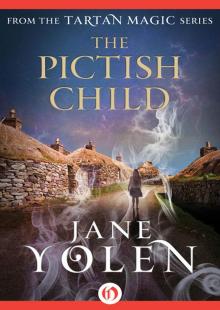 The Pictish Child
The Pictish Child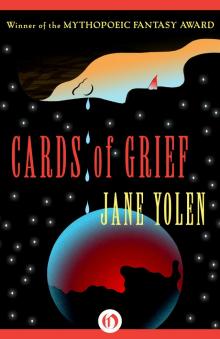 Cards of Grief
Cards of Grief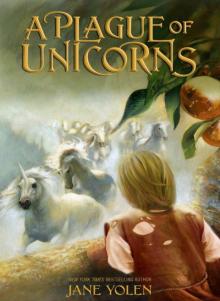 A Plague of Unicorns
A Plague of Unicorns Heart's Blood
Heart's Blood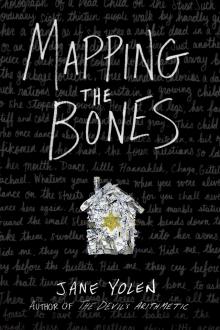 Mapping the Bones
Mapping the Bones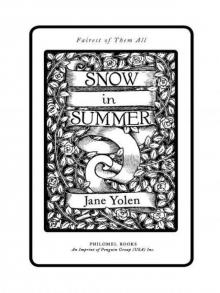 Snow in Summer
Snow in Summer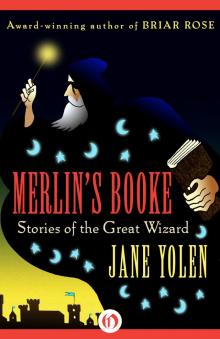 Merlin's Booke: Stories of the Great Wizard
Merlin's Booke: Stories of the Great Wizard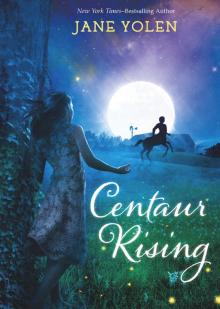 Centaur Rising
Centaur Rising The One-Armed Queen
The One-Armed Queen Dragon's Blood
Dragon's Blood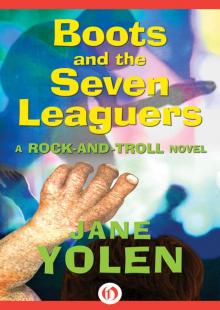 Boots and the Seven Leaguers
Boots and the Seven Leaguers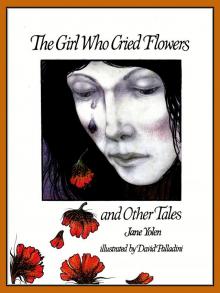 The Girl Who Cried Flowers and Other Tales
The Girl Who Cried Flowers and Other Tales The Wizard of Washington Square
The Wizard of Washington Square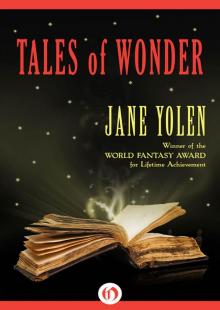 Tales of Wonder
Tales of Wonder The Emerald Circus
The Emerald Circus Sister Light, Sister Dark
Sister Light, Sister Dark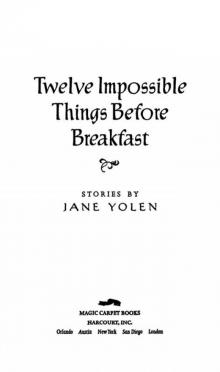 Twelve Impossible Things Before Breakfast
Twelve Impossible Things Before Breakfast The Devil's Arithmetic
The Devil's Arithmetic Trash Mountain
Trash Mountain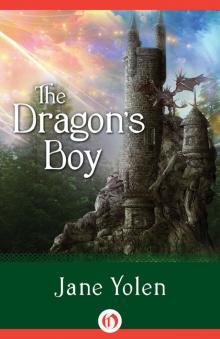 The Dragon's Boy
The Dragon's Boy A Sending of Dragons
A Sending of Dragons The Young Merlin Trilogy
The Young Merlin Trilogy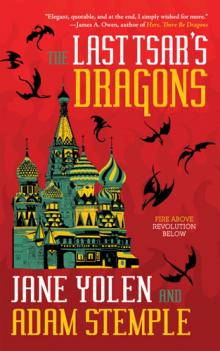 The Last Tsar's Dragons
The Last Tsar's Dragons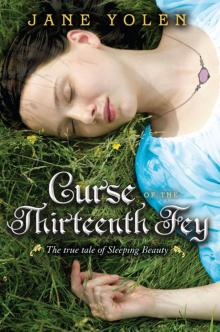 Curse of the Thirteenth Fey: The True Tale of Sleeping Beauty
Curse of the Thirteenth Fey: The True Tale of Sleeping Beauty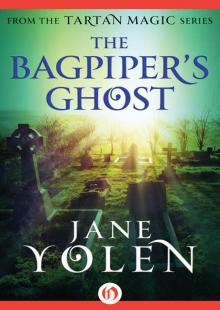 The Bagpiper's Ghost
The Bagpiper's Ghost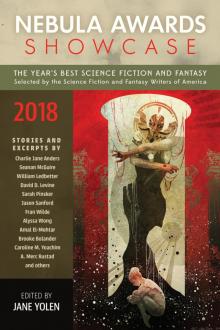 Nebula Awards Showcase 2018
Nebula Awards Showcase 2018 Hobby
Hobby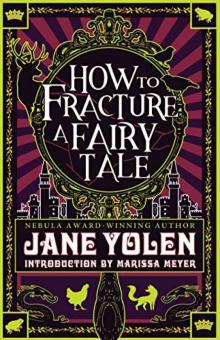 How to Fracture a Fairy Tale: 2
How to Fracture a Fairy Tale: 2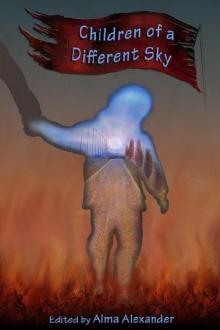 Children of a Different Sky
Children of a Different Sky Commander Toad and the Intergalactic Spy
Commander Toad and the Intergalactic Spy Wizard’s Hall
Wizard’s Hall The Transfigured Hart
The Transfigured Hart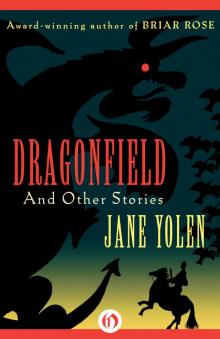 Dragonfield: And Other Stories
Dragonfield: And Other Stories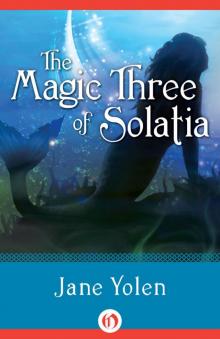 The Magic Three of Solatia
The Magic Three of Solatia The Great Alta Saga Omnibus
The Great Alta Saga Omnibus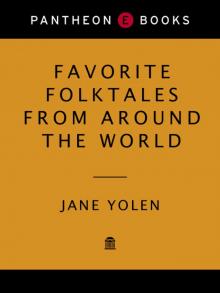 Favorite Folktales From Around the World
Favorite Folktales From Around the World Passager
Passager The Wizard's Map
The Wizard's Map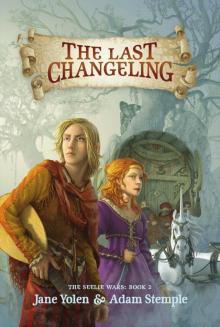 The Last Changeling
The Last Changeling Except the Queen
Except the Queen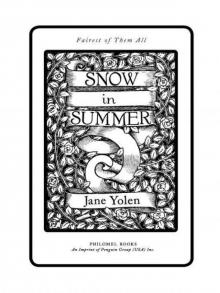 Snow in Summer: Fairest of Them All: Fairest of Them All
Snow in Summer: Fairest of Them All: Fairest of Them All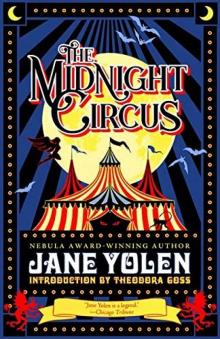 The Midnight Circus
The Midnight Circus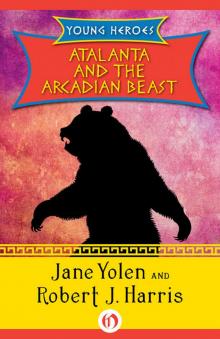 Atalanta and the Arcadian Beast
Atalanta and the Arcadian Beast Finding Baba Yaga
Finding Baba Yaga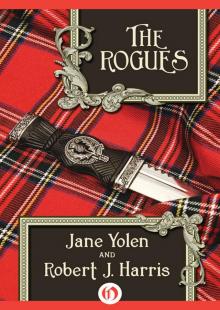 The Rogues
The Rogues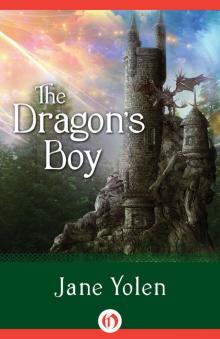 Dragon's Boy
Dragon's Boy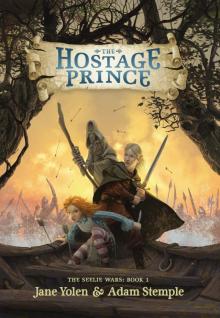 The Hostage Prince
The Hostage Prince Wizard of Washington Square
Wizard of Washington Square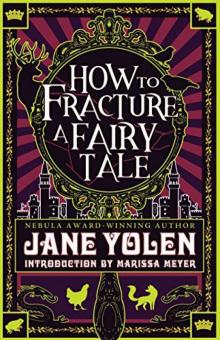 How to Fracture a Fairy Tale
How to Fracture a Fairy Tale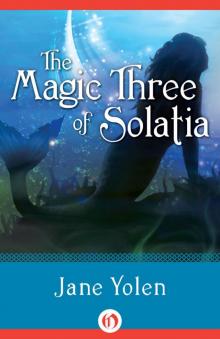 Magic Three of Solatia
Magic Three of Solatia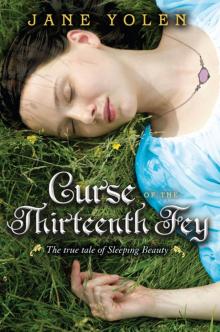 Curse of the Thirteenth Fey
Curse of the Thirteenth Fey My Brothers' Flying Machine
My Brothers' Flying Machine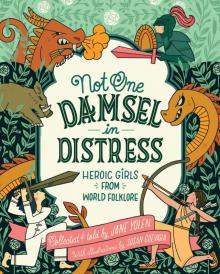 Not One Damsel in Distress
Not One Damsel in Distress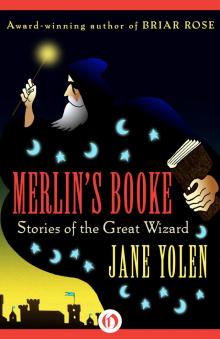 Merlin's Booke
Merlin's Booke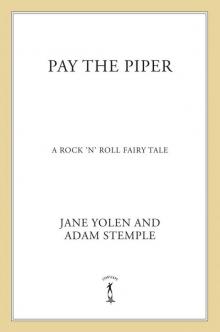 Pay the Piper: A Rock 'n' Roll Fairy Tale
Pay the Piper: A Rock 'n' Roll Fairy Tale Merlin
Merlin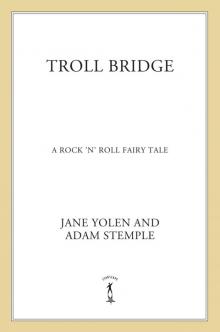 Troll Bridge
Troll Bridge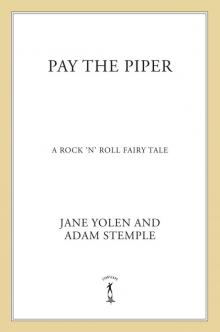 Pay the Piper
Pay the Piper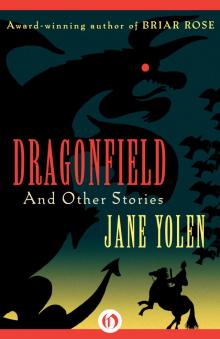 Dragonfield
Dragonfield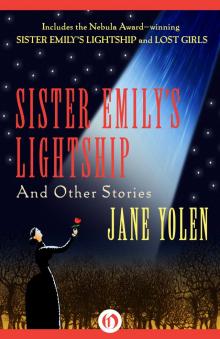 Sister Emily's Lightship
Sister Emily's Lightship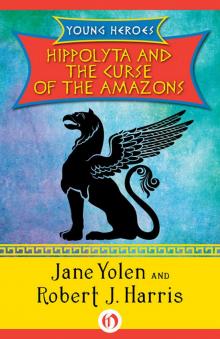 Hippolyta and the Curse of the Amazons
Hippolyta and the Curse of the Amazons Prince Across the Water
Prince Across the Water Dragon's Heart
Dragon's Heart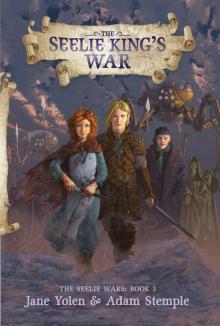 The Seelie King's War
The Seelie King's War Among Angels
Among Angels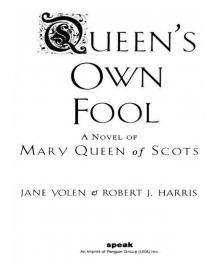 Queen's Own Fool
Queen's Own Fool